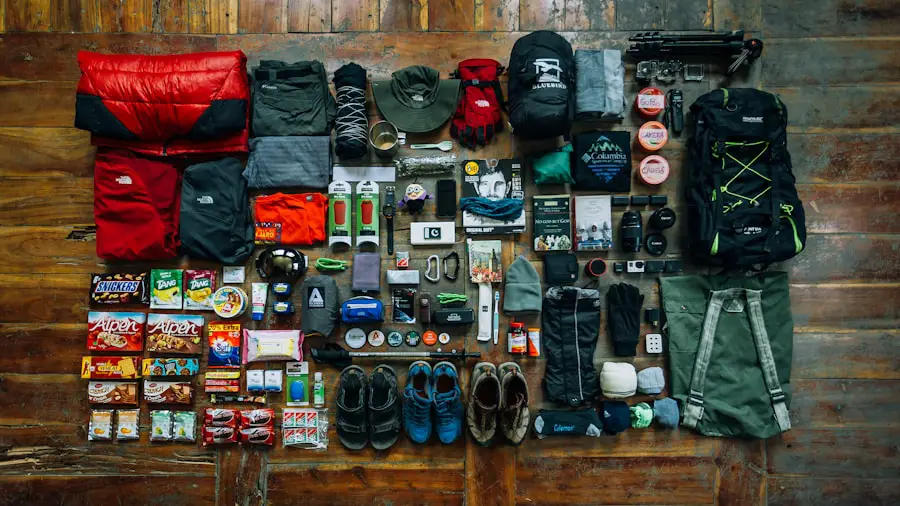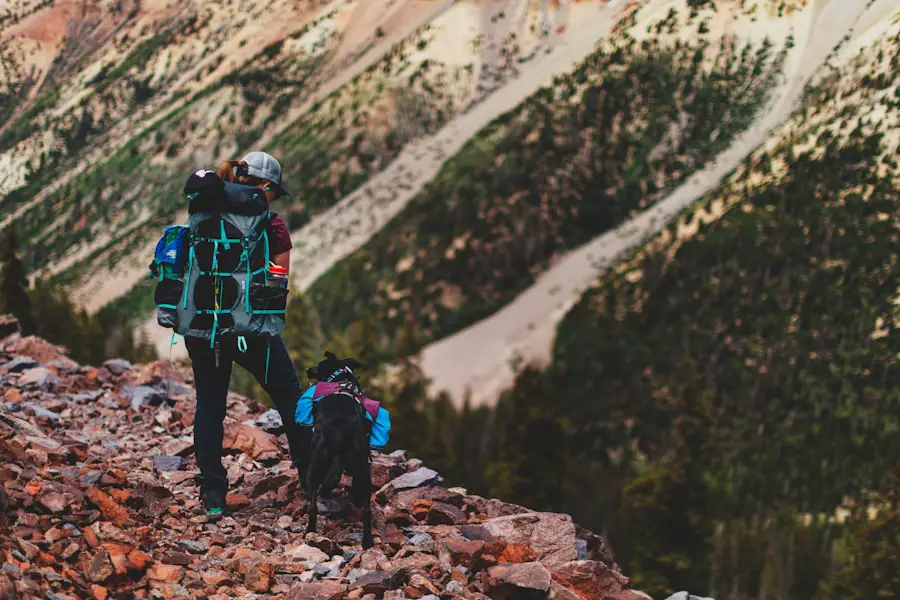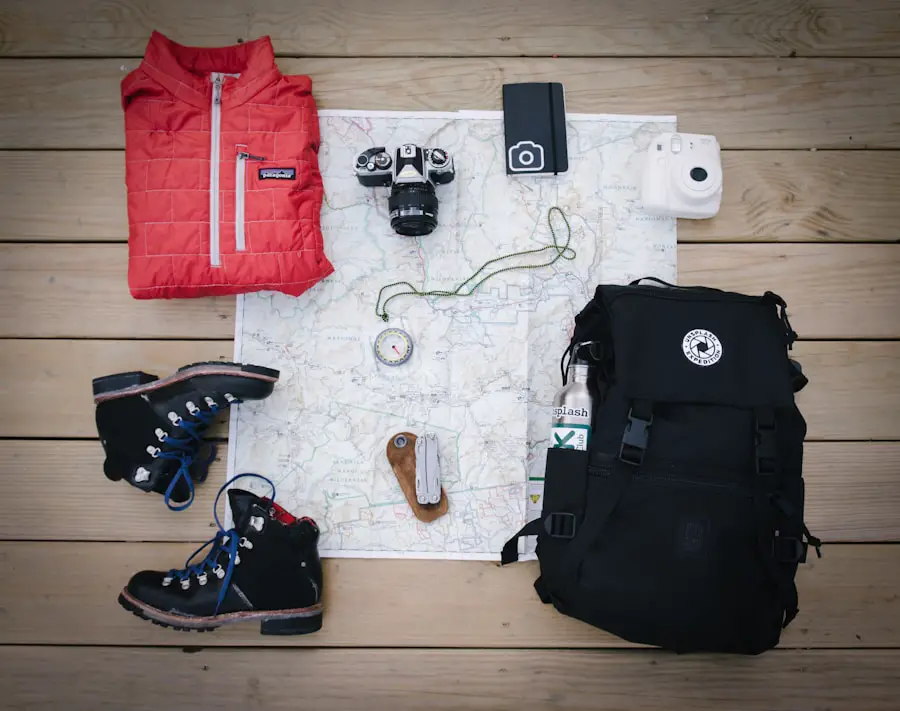Selecting the appropriate backpack is a critical first step in preparing for any outdoor adventure, whether it be a day hike or an extended trek. The right backpack not only enhances comfort but also significantly impacts your overall experience. When choosing a backpack, consider the size and capacity that aligns with your trip’s duration and the amount of gear you plan to carry.
For day hikes, a backpack with a capacity of 20 to 30 liters is typically sufficient, while multi-day excursions may require packs ranging from 50 to 70 liters or more. It’s essential to assess how much gear you need to carry, as overpacking can lead to discomfort and fatigue. Another vital aspect to consider is the fit of the backpack.
A well-fitted backpack should sit comfortably on your back without causing strain. Look for adjustable straps, including shoulder straps, hip belts, and sternum straps, which help distribute weight evenly across your body. Many manufacturers offer backpacks in different sizes to accommodate various torso lengths, so it’s advisable to try on several options before making a decision.
Additionally, features such as ventilation systems, load lifters, and padded back panels can enhance comfort during long treks. Ultimately, investing time in selecting the right backpack will pay off in terms of comfort and functionality on the trail.
Key Takeaways
- Choose a backpack with adjustable straps and proper back support for comfort and weight distribution
- Pack lightweight, moisture-wicking clothing and sturdy, comfortable footwear for varying weather conditions
- Carry navigation tools such as maps, compass, and GPS, along with safety equipment like a whistle and first aid kit
- Stay hydrated with a water reservoir or bottles, and pack high-energy snacks for sustained nutrition on the trail
- Bring a lightweight, weatherproof shelter and a warm sleeping bag for a comfortable night’s rest in the outdoors
- Personal care items like sunscreen, insect repellent, and a basic first aid kit are essential for outdoor adventures
- Don’t forget miscellaneous essentials like a multi-tool, headlamp, and extra batteries for added convenience and safety
- Efficiently pack and distribute weight in your backpack to minimize strain on your body during long hikes
Clothing and Footwear Essentials
When it comes to outdoor activities, the right clothing and footwear are paramount for both comfort and safety. Layering is a fundamental principle in outdoor clothing, allowing you to adapt to changing weather conditions. The base layer should be moisture-wicking to keep sweat away from your skin; materials like merino wool or synthetic fabrics are excellent choices.
The mid-layer provides insulation, with fleece or down jackets being popular options for cooler temperatures. Finally, the outer layer should be waterproof and windproof to protect against the elements. Investing in high-quality clothing that is both durable and functional can make a significant difference in your overall experience.
Footwear is equally important, as the right shoes can prevent injuries and enhance performance on the trail. Hiking boots or shoes should provide adequate support and traction, especially if you plan to traverse rocky or uneven terrain. Look for footwear with a sturdy sole that offers good grip and stability.
Additionally, consider the fit; shoes should be snug but not overly tight, allowing for some movement of your toes. It’s advisable to break in new footwear before embarking on a long hike to avoid blisters and discomfort. For warmer weather, breathable shoes or sandals designed for hiking can be suitable alternatives, but ensure they still provide adequate support.
Navigation Tools and Safety Equipment

Navigating through unfamiliar terrain requires reliable tools and equipment to ensure safety and direction. A topographic map of the area you plan to explore is essential, as it provides detailed information about elevation changes, trails, and landmarks. Familiarizing yourself with reading maps can enhance your navigation skills significantly.
In addition to a map, a compass is an invaluable tool that can help you orient yourself and maintain your bearings. While many hikers rely on GPS devices or smartphone apps for navigation, it’s crucial to have traditional tools as backups in case of technology failure or battery depletion. Safety equipment is another critical component of outdoor preparedness.
A whistle can be a lifesaver in emergency situations, allowing you to signal for help without expending too much energy. A multi-tool or knife can serve various purposes, from preparing food to making minor repairs on gear. Additionally, carrying a headlamp or flashlight with extra batteries ensures you are prepared for low-light conditions or emergencies after dark.
First aid kits are also essential; they should include items like adhesive bandages, antiseptic wipes, gauze pads, and any personal medications you may need. Being equipped with these navigation tools and safety equipment can significantly enhance your confidence while exploring the great outdoors.
Hydration and Nutrition
| Metrics | Hydration | Nutrition |
|---|---|---|
| Water intake | 8 glasses per day | Varies by individual, but generally 8-10 glasses per day |
| Electrolyte balance | Maintain proper balance for hydration | Include potassium, sodium, magnesium, and calcium in diet |
| Hydration status | Monitor urine color and frequency | Monitor energy levels and overall well-being |
| Macronutrient intake | N/A | Carbohydrates, proteins, and fats in appropriate proportions |
| Micronutrient intake | N/A | Include vitamins and minerals from fruits, vegetables, and supplements if necessary |
Staying hydrated is crucial during any outdoor activity, as dehydration can lead to fatigue, dizziness, and impaired performance. Carrying enough water is essential; a general guideline is to drink about half a liter of water per hour of moderate activity in moderate temperatures. Depending on the length of your hike and environmental conditions, consider using hydration reservoirs or water bottles that are easy to access while on the move.
Some backpacks come equipped with hydration systems that allow you to sip water through a tube without stopping, which can be particularly convenient during strenuous hikes. Nutrition plays an equally important role in maintaining energy levels throughout your adventure. Packing lightweight, high-energy snacks such as trail mix, energy bars, or jerky can provide quick fuel when needed.
For longer trips, consider preparing meals that are easy to cook and pack well; dehydrated meals are popular among backpackers due to their lightweight nature and long shelf life. It’s also wise to plan your meals around your activity level; consuming carbohydrates before strenuous sections of your hike can help sustain energy levels. Balancing hydration and nutrition effectively will ensure you remain energized and focused during your outdoor pursuits.
Shelter and Sleeping Gear
When planning an overnight trip or multi-day expedition, selecting appropriate shelter and sleeping gear is vital for comfort and safety. Tents come in various styles and sizes; lightweight backpacking tents are designed for portability while providing adequate protection from the elements. When choosing a tent, consider factors such as weight, ease of setup, weather resistance, and space for occupants and gear.
Some tents are designed specifically for certain conditions—like three-season tents for spring through fall use—while others may be suitable for winter camping. Sleeping gear is equally important for ensuring a good night’s rest in the wilderness. A sleeping bag rated for the expected temperature range is essential; down sleeping bags offer excellent insulation but can be more expensive than synthetic options.
Additionally, consider using a sleeping pad for added comfort and insulation from the cold ground. Inflatable pads are lightweight and packable but may require more care than foam pads. The combination of a suitable tent and quality sleeping gear will significantly enhance your ability to recharge during your outdoor adventures.
Personal Care and First Aid

Personal care items may seem trivial compared to other gear but can greatly impact your comfort during outdoor activities. Sunscreen is essential for protecting your skin from harmful UV rays, especially at higher altitudes where the sun’s intensity increases. Lip balm with SPF can also prevent chapped lips during long hikes in sunny conditions.
Insect repellent is another important item; depending on the region and season, mosquitoes and ticks can pose significant risks. Choose a repellent that contains DEET or other effective ingredients for optimal protection. First aid supplies are crucial for addressing minor injuries that may occur while hiking or camping.
A well-stocked first aid kit should include adhesive bandages of various sizes, antiseptic ointment, gauze pads, medical tape, tweezers for splinter removal, and pain relievers such as ibuprofen or acetaminophen. It’s also wise to include any personal medications you may need during your trip. Familiarizing yourself with basic first aid techniques can empower you to handle minor emergencies effectively while out in the wilderness.
Miscellaneous Essentials
Beyond the primary gear categories discussed earlier, several miscellaneous essentials can enhance your outdoor experience significantly. A reliable fire-starting kit is crucial for warmth and cooking; waterproof matches or a lighter should be included in your gear list. Additionally, carrying a small cooking stove can facilitate meal preparation in remote areas where campfires may not be allowed or practical.
Compact cookware sets designed for backpacking are lightweight and often nest together for easy packing. Another often-overlooked item is a portable charger or power bank for electronic devices such as smartphones or GPS units. While it’s essential to disconnect from technology during outdoor adventures, having a way to recharge devices can be beneficial for navigation or emergency communication purposes.
A lightweight tarp can also serve multiple purposes: as a ground cover under your tent, a sunshade during breaks, or even as an emergency shelter if needed. These miscellaneous essentials may seem minor but can greatly enhance both comfort and safety during outdoor excursions.
Tips for Efficient Packing and Weight Distribution
Efficient packing is crucial for maximizing comfort during outdoor activities while minimizing fatigue from carrying excess weight. Start by laying out all your gear before packing; this allows you to assess what you truly need versus what might be unnecessary clutter. Prioritize lightweight items wherever possible; opting for ultralight gear can significantly reduce your pack weight without sacrificing functionality.
When packing your backpack, consider weight distribution carefully. Heavier items should be placed close to your back and centered within the pack to maintain balance while walking. Lighter items can be packed towards the top or outside pockets for easy access during breaks.
Utilizing compression sacks for clothing or sleeping bags can save space within your pack while keeping items organized. Additionally, securing smaller items in external pockets allows for quick access without rummaging through your entire pack. By following these tips for efficient packing and weight distribution, you’ll not only enhance your comfort on the trail but also improve your overall hiking experience by reducing strain on your body during long treks into nature’s beauty.
When preparing for a hiking trip, it’s important to pack efficiently and effectively. One essential item to consider bringing along is a pair of compact binoculars, which can enhance your outdoor experience by allowing you to observe wildlife and scenic views up close. For more tips on how to pack for hiking, check out this article on the best carry-on suitcase with a USB charger. This handy piece of luggage not only provides ample storage space for all your gear but also ensures that your electronic devices stay charged throughout your journey. Additionally, don’t forget to pack a high-quality sleeping bag for backpacking travel to ensure a comfortable night’s rest under the stars.
Love travel? Join Our Facebook Community
FAQs
What should I pack for a day hike?
For a day hike, you should pack essentials such as water, snacks, a map, compass, first aid kit, sun protection, extra clothing layers, a flashlight, and a multi-tool.
What should I pack for an overnight hike?
For an overnight hike, in addition to the essentials for a day hike, you should pack a tent, sleeping bag, sleeping pad, stove, cookware, food, and extra clothing.
How should I pack my backpack for a hike?
When packing your backpack for a hike, it’s important to distribute the weight evenly, with heavier items closer to your back and lighter items towards the outside. Use packing cubes or stuff sacks to organize and compress your gear.
What type of backpack should I use for hiking?
For day hikes, a small to medium-sized backpack (15-30 liters) is sufficient. For overnight hikes, a larger backpack (40-70 liters) with a hip belt and adjustable straps for proper fit is recommended.
What are some additional items to consider packing for a hike?
Additional items to consider packing for a hike include trekking poles, a camera, a portable charger, insect repellent, a whistle, and a lightweight tarp or emergency shelter.
